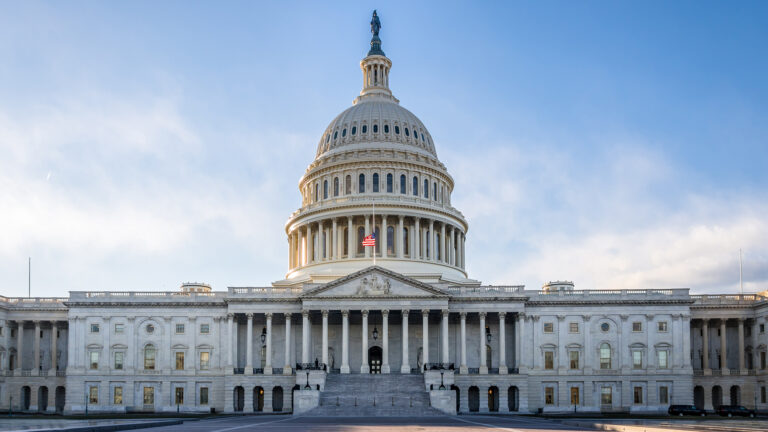By Lauren Bailey
The past year saw more lawsuits filed against plan sponsors that have executed large pension risk transfers (PRTs), but there are steps employers can take to mitigate the risk of losing such a lawsuit if one is brought, said Robin Diamonte, chief investment officer of RTX, formerly Raytheon Technologies Corp.
Many of the lawsuits take aim at PRTs to Athene Holding Ltd. and its subsidiaries, two of which have since rendered dueling judgements. Insiders say robust pension plans with billions of dollars can be low hanging fruit for law firms and tempting to target. And many of the lawsuits brought forth involving Athene tried to make the case that it was a risky company for transfers, since it was fairly new to the PRT space.
Last March, for example, AT&T Inc. and its independent fiduciary, State Street Global Advisors Trust Co. were sued by former participants after conducting a roughly $8B PRT in 2023 that transferred 96,000 plan participants to Athene. In the filing, the plaintiffs alleged that the PRT put “retirees'” futures in the hands of a risky new insurance company that is dependent on its Bermuda-based subsidiary and which has an asset base far riskier than AT&T’s.”
Three additional former participants of AT&T’s pension benefit plan then filed a separate complaint against the telecommunications company and State Street, also accusing the companies of violating their responsibilities under the Employee Retirement Income Security Act to obtain the “safest annuity available.”
Please Click Here to Register Now!
In addition, in a lawsuit filed in April 2024, four retiree members of Pittsburgh-based Alcoa USA Corp. alleged that the organization violated its duties under ERISA. In the filing, the plaintiffs alleged that, as a result of PRTs to by their employer to Athene between 2018 and 2022, they “lost their status as ‘participants’ in the ERISA-governed plans, and, therefore, are no longer subject to ERISA’s protections for employee retirement benefits.”
The lawsuit also alleged that the organization selected “a substantially riskier insurer than numerous other traditional annuity providers.” The case was later dismissed for lack of standing, with the judge noting the plaintiffs failed to demonstrate actual harm as a result of the pension buyout transaction.
However, a separate lawsuit filed by four former pension plan members against Lockheed Martin Corp. for PRTs it offloaded to Athene in both 2021 and 2022 was allowed to proceed. In the filing, the plaintiffs alleged the organization neglected to choose the “safest possible annuity” and that, the organization’s transfer “put its employees’ future retirement benefits at substantial risk of default — a risk for which they were not compensated and which devalued their pensions.” The judge in this case found the plaintiffs met
the threshold in demonstrating “very real possibility” of imminent harm to retirees.
In the past, there have been cases where PRT lawsuits have been dismissed; however, in cases where they’ve gone past the motion to dismiss, it’s a loss for many plan sponsors — even if they end up winning the
case in the end, said Dennis Simmons, executive director for the Committee on Investment of Employee Benefit Assets.
“They have to go into the really expensive process of discovery, and . . . I think in a lot of cases, plaintiffs are just looking to get past the motion to dismiss to . . . a settlement. It’s a concern overall and has been for years.”
Administrative details matter
While there is guidance from the Department of Labor on picking an insurance provider, it’s a little bit vague in the sense that it doesn’t define what exactly is the “safest available annuity,” said Diamonte, noting there are things plan sponsors can do to ensure they perform and document good fiduciary due diligence.
In 2018, Raytheon implemented its own PRT, transferring nearly $1B in pension benefit obligations for 13,000 U.S. retirees and their beneficiaries through a group annuity contract with the Prudential Insurance
Co. of America, a subsidiary of Prudential Financial Inc.
Typically, in these transactions a settlor committee is created to take a hard look at transaction timing and scope, as well as a fiduciary committee that is created to ensure the insurance company is stable, safe, of the highest quality and has the capabilities to perform all the administrative duties that would be expected of them, said Diamonte.
“More and more plan sponsors are realizing that it’s important, because of litigation reasons, to hire an independent fiduciary to try to help curb the [potential] for litigation,” she noted. “You have to really be careful as a fiduciary to make sure that you are documenting the insurer selection process and that you’re really looking out for the best interests of your participants, and [you] understand state guarantees versus the federal [Pension Benefit Guaranty Corp.] guarantees.”
Recent pension risk transfer litigation reinforces just how critical it is for employers to do the required due diligence when implementing these solutions, said Megan Nichols, a senior partner and head of pension settlement solutions at Aon.
She said it’s critical plan sponsors have the documentation to demonstrate every step they’ve taken to ensure plan members are protected and that they’ve fulfilled their responsibilities under ERISA, including what aspects of the new insurer they examined, the conclusions drawn and why.
Nichols noted that one of the biggest risks for employers in these transactions is overlooking the communications process. In a full plan windup, there are clear regulatory requirements on the cadence of
communications and information to be sent to plan participants. In a PRT process, plan sponsors have a little more discretion. Similar to the communications process behind full plan windups, the PRT process typically
begins with notifying participants of the change and any relevant information that needs to be provided.
Providing reassurance
When implementing the PRT process, it can be helpful to reassure plan members that the PRT mechanism is a de-risking tool and that very few companies profit from the transaction, said Diamonte.
She also pointed out that, in most cases, pension plans can become a large liability that isn’t a part of an organization’s core business, so it’s beneficial for both the plan sponsor and members to have it transferred
to an insurance company for which liabilities is its focus and core business.
“The more that a participant understands that the company is not trying to profit off of this, I think the more they’ll feel better about the transaction. . . . If you talk to an insurance company, they’ll tell you that the pension liability actually hedges life insurance liability. In many cases, insurance companies have been managing liabilities for years and are well equipped to take on these liabilities.”
Employees usually just want to know the new company paying their benefits is credible and has the resources to do their job, she said. “In some cases, insurance companies are a lot more diversified than individual corporations.”
As well, it’s important to send communications at the point of transitioning people to the insurance company to just give participants that background and to ensure that they feel comfortable with what’s happening, said Nichols.
“It’s really critical that [plan sponsors] understand the insurance company’s administrative capabilities. If you’ve got a population that’s used to going to a specific call center or how they interact with the employer itself, that’s all going to move to the selected insurance company. So, you want to be confident that you’re sending your participants to an organization that’s going to uphold the same standards that you have at your
own organization. And I think if those things are done right, it can hopefully feel very smooth and seamless for the plan participants.”
Diamonte said for its PRT, Raytheon did a deep dive into the administrative services capabilities, in addition to focusing on premium and risk control. She suggests plan sponsors visit the insurers’ call centers to see their service levels, how they’re handling calls and wait times and whether they’re deploying
satisfaction surveys.
Far-reaching consequences
Simmons believes the recent pension risk transfer lawsuits are part of another litigation trend that could further deter some U.S. employers from sponsoring employee retirement plans.
He noted that, in cases in which losses are speculative, plaintiffs should be held to a reasonably high bar because these judicial opinions will have ramifications for the defined benefit pension plan sector.
“Our concern is that when courts are not at least forcing plaintiffs to come with some legitimate claim, it really is a difficult spot for plan fiduciaries who are voluntarily offering these plans to begin with,” he said. “These are voluntary benefits that plans offer and so to have frivolous litigation is . . . a major issue for the retirement savings system overall.”
Indeed, Bob Hunkeler said as much in an exit interview to Markets Group in 2023, upon his retirement from the International Paper Co. At the time of his interview, he noted the Memphis, Tenn-based pulp and paper manufacturer was caught up in the initial set of companies that experienced the first 401k lawsuits after transferring roughly $1.3B in pensionliabilities for 45,000 retirees and their beneficiaries to Prudential Insurance Co. of America in Oct. 2017.
The class-action lawsuit took six years to resolve in the courts, resulting in a $30M settlement. Hunkeler noted that increased PRT litigation was one far-reaching negative outcome from the case. He also pointed
out that many plan members move their retirement savings to external financial institutions after retiring from the company, which is another reason why some employers have had to use PRTs to de-risk. He noted that the lawsuits subsequently led to a decline in employer-sponsored defined benefit pension
plans.
CIEBA has submitted friend-of-the-court amicus briefs to chime in on PRT cases in the hopes of underscoring just how important this issue is for the retirement savings systems.













